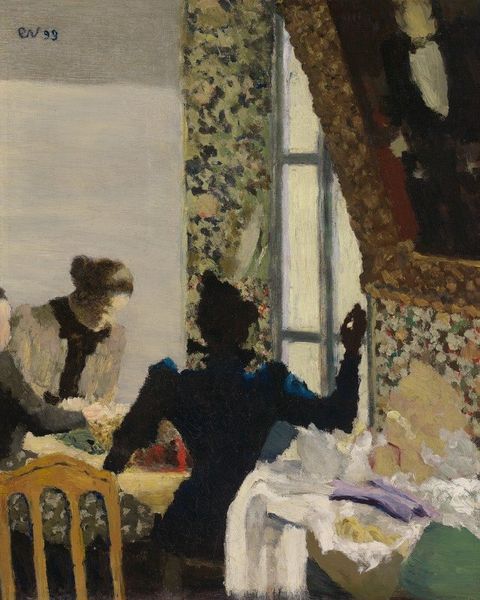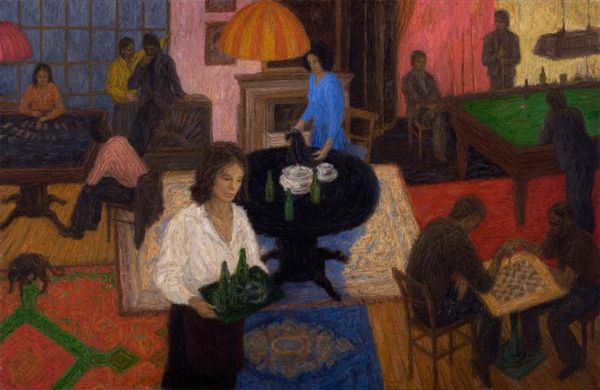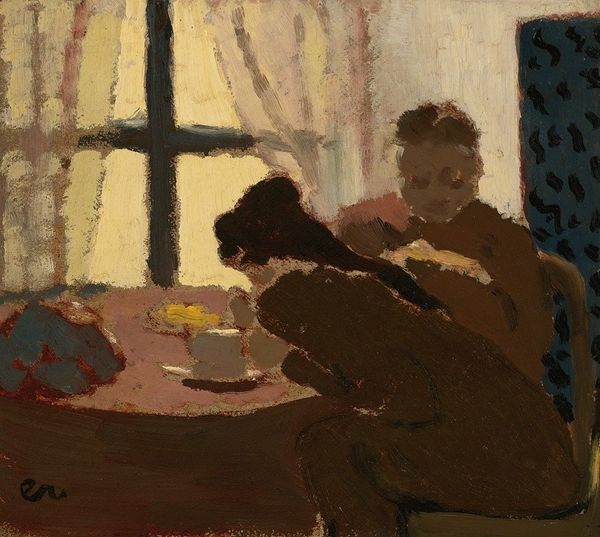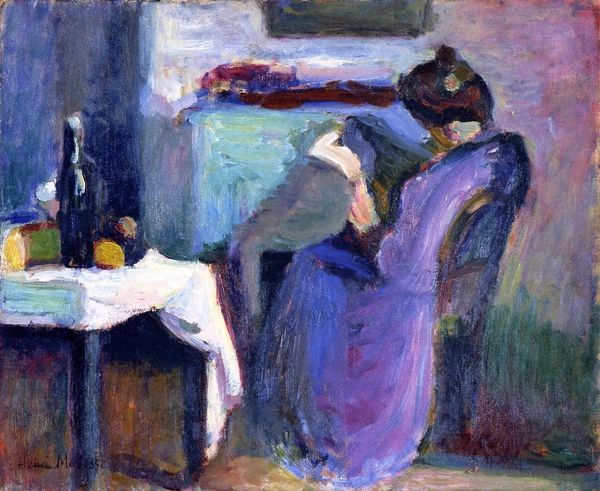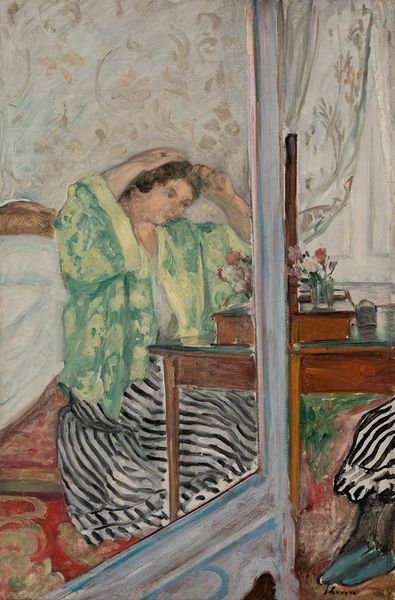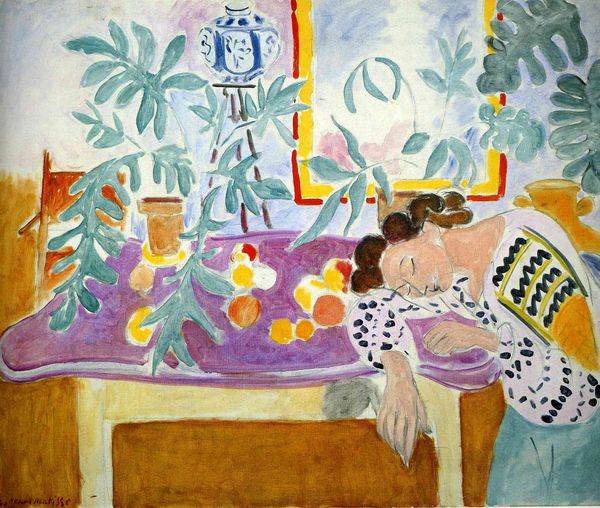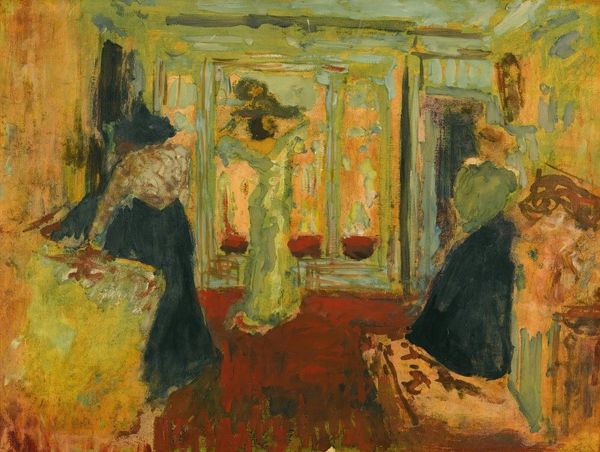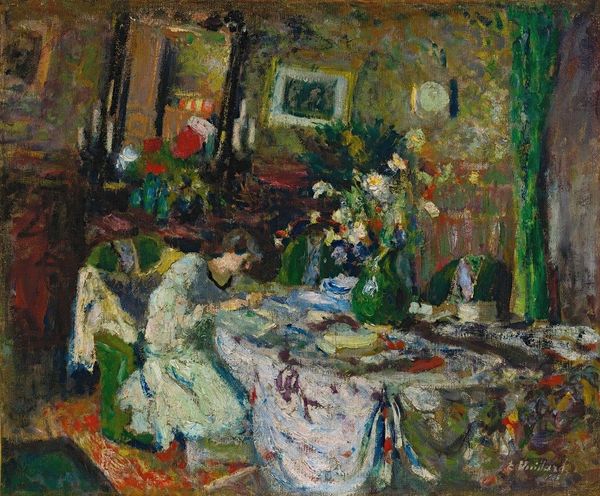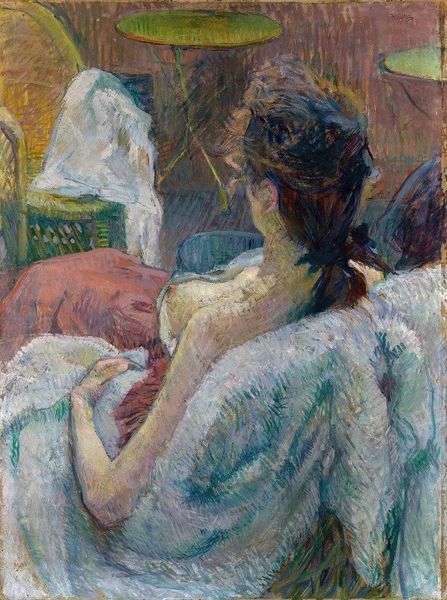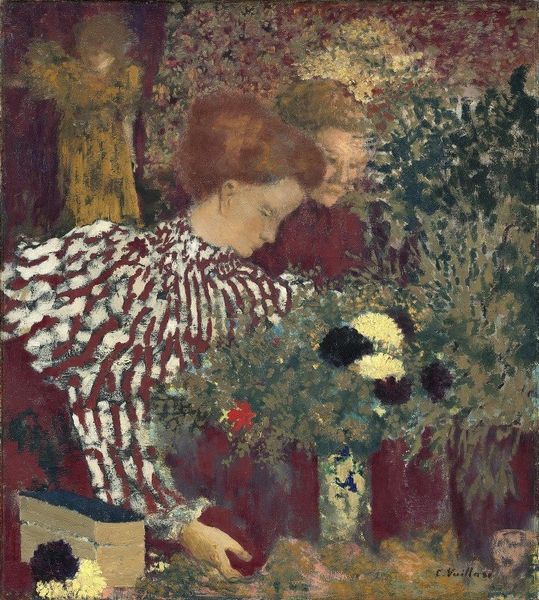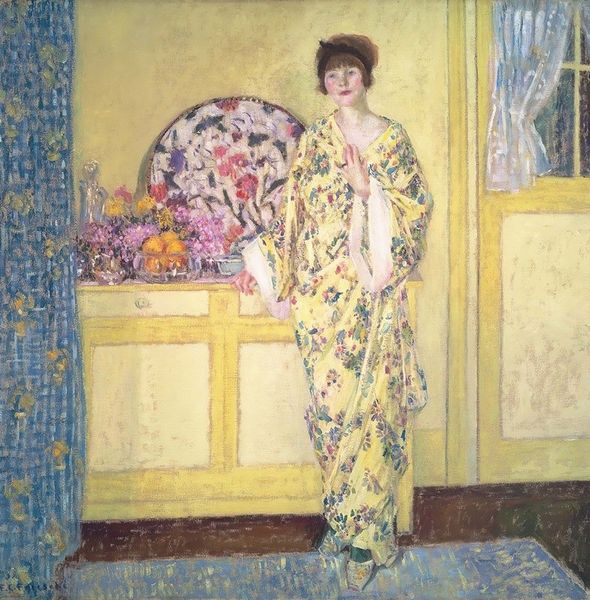
Dimensions: 38 x 46 cm
Copyright: Public domain
Édouard Vuillard painted The Flowered Dress in 1891 using oil on cardboard. This intimate interior scene invites us to consider the social role of women in late 19th-century France, a period marked by evolving social norms. Vuillard was a member of the Nabis, a Post-Impressionist avant-garde who advocated for art that was symbolic and personal. In this interior scene, we see the influence of Japonisme in the flattening of space and the emphasis on decorative patterns. The flowered dress becomes a focal point, reflecting the rising significance of fashion and consumer culture. The scene hints at the domestic sphere, a place where women were both confined and found solidarity. Is Vuillard reflecting the social constraints placed on women or celebrating their private world? To fully understand this work, we need to consider the role of artistic movements and changing social expectations. Research into fashion history, feminist theory, and the Nabis will offer a richer interpretation of Vuillard's art.
Comments
No comments
Be the first to comment and join the conversation on the ultimate creative platform.
